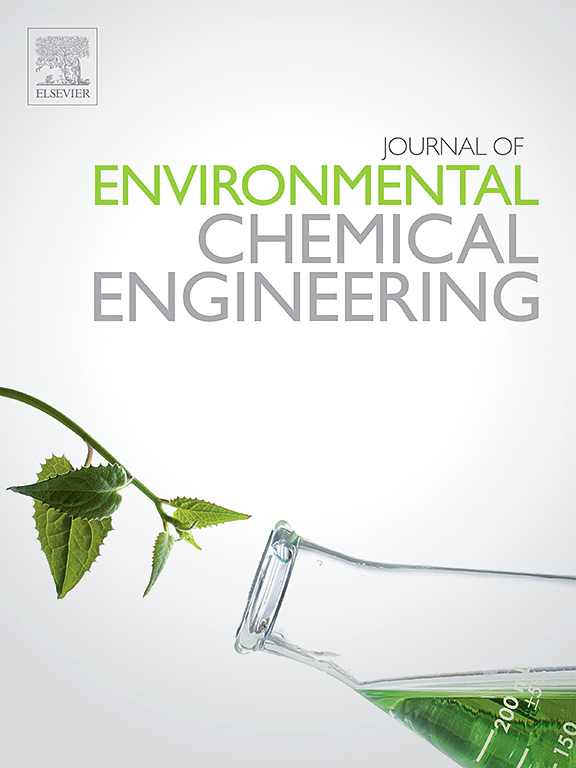Unveiling the photocatalytic potential of mesoporous carbon nitride in environmental applications: Properties, synthesis and doping strategies
IF 7.4
2区 工程技术
Q1 ENGINEERING, CHEMICAL
引用次数: 0
Abstract
Graphitic carbon nitride (in simple terms, g-C3N4) is a metal-free semiconductor polymer material with many properties, alike graphene, and having a composition of carbon and nitrogen with some hydrogen impurity in its structure. However, unlike graphene, g-C3N4 possesses an intermediate energy gap between the valence and conduction band. High thermal and chemical stability with a conjugated polymerised geometric arrangement of g-C3N4 enhances its photon harvesting potential, leading to improved photocatalytic oxidation and reduction efficiency. The π-conjugated system in g-C3N4 possesses great potential for tuning the delocalised electrons as well as the intercalation of foreign structures which synergise the catalytic effects and enhance the redox efficiency by several folds. The tunable optoelectronic properties, HOMO-LUMO positioning and the hybridisation of the molecular orbital between g-C3N4 and dopant molecule expand the horizon of the fate of g-C3N4 polymer in numerous areas as a photocatalyst material with tremendous potential. In this article, the facile synthetic routes for the g-C3N4 synthesis are discussed along with the mechanisms for enhanced catalytic efficiencies of pristine g-C3N4 via various doping, co-doping and heterojunction engineering. Furthermore, the use of machine learning methods for analysis, as well as validation of its exceptional photocatalytic potential, is briefly summarised.
求助全文
约1分钟内获得全文
求助全文
来源期刊

Journal of Environmental Chemical Engineering
Environmental Science-Pollution
CiteScore
11.40
自引率
6.50%
发文量
2017
审稿时长
27 days
期刊介绍:
The Journal of Environmental Chemical Engineering (JECE) serves as a platform for the dissemination of original and innovative research focusing on the advancement of environmentally-friendly, sustainable technologies. JECE emphasizes the transition towards a carbon-neutral circular economy and a self-sufficient bio-based economy. Topics covered include soil, water, wastewater, and air decontamination; pollution monitoring, prevention, and control; advanced analytics, sensors, impact and risk assessment methodologies in environmental chemical engineering; resource recovery (water, nutrients, materials, energy); industrial ecology; valorization of waste streams; waste management (including e-waste); climate-water-energy-food nexus; novel materials for environmental, chemical, and energy applications; sustainability and environmental safety; water digitalization, water data science, and machine learning; process integration and intensification; recent developments in green chemistry for synthesis, catalysis, and energy; and original research on contaminants of emerging concern, persistent chemicals, and priority substances, including microplastics, nanoplastics, nanomaterials, micropollutants, antimicrobial resistance genes, and emerging pathogens (viruses, bacteria, parasites) of environmental significance.
 求助内容:
求助内容: 应助结果提醒方式:
应助结果提醒方式:


